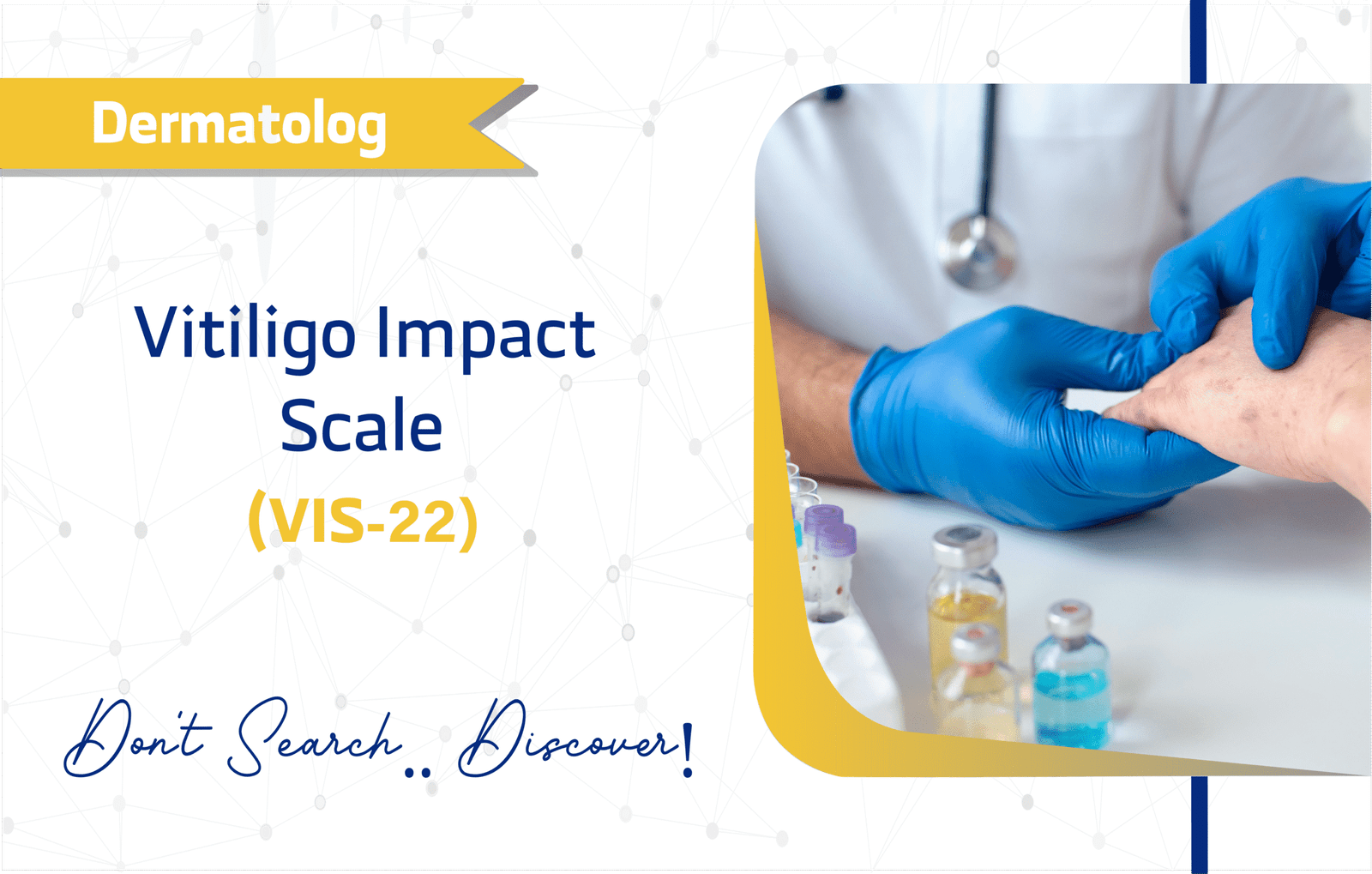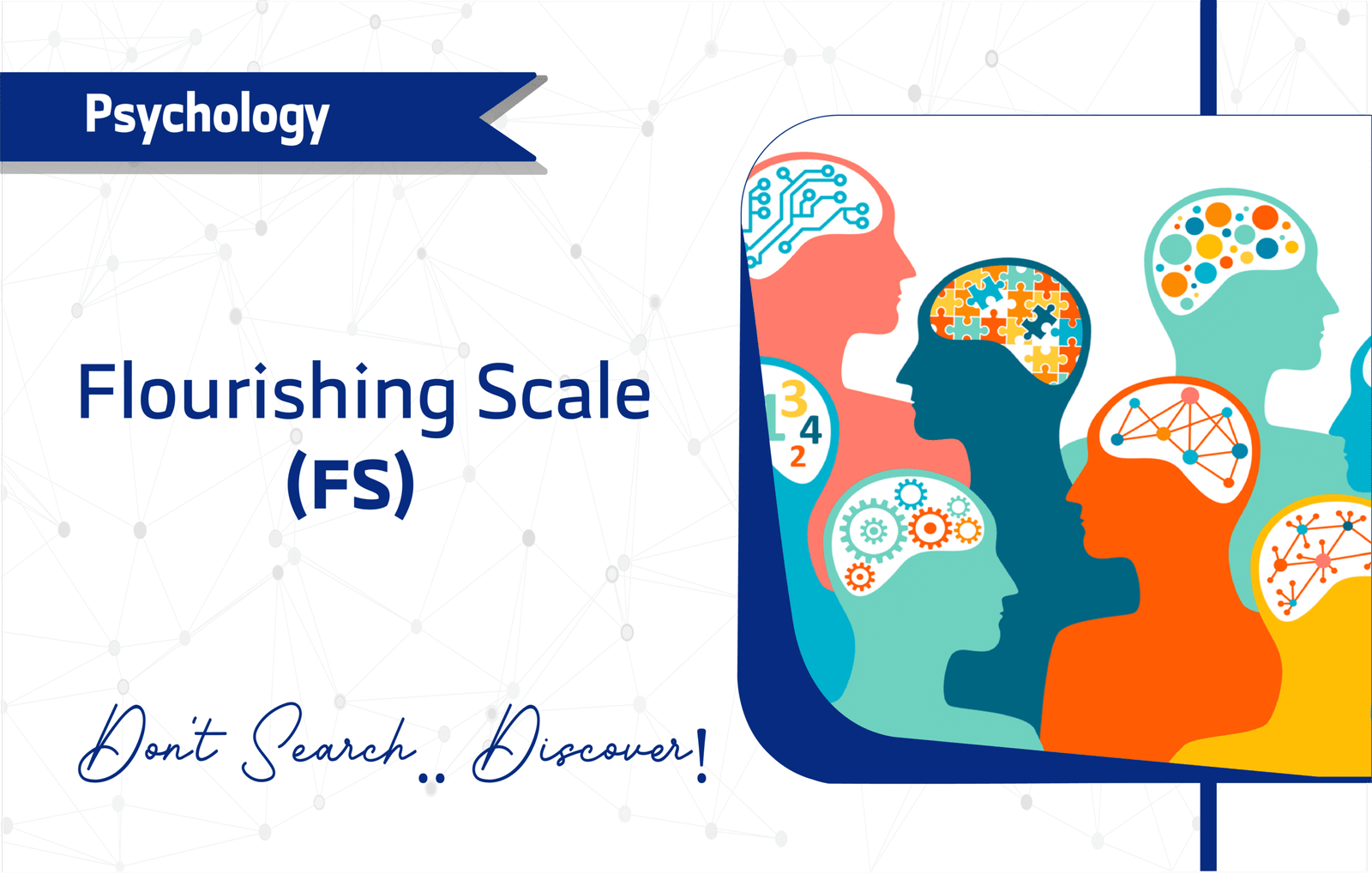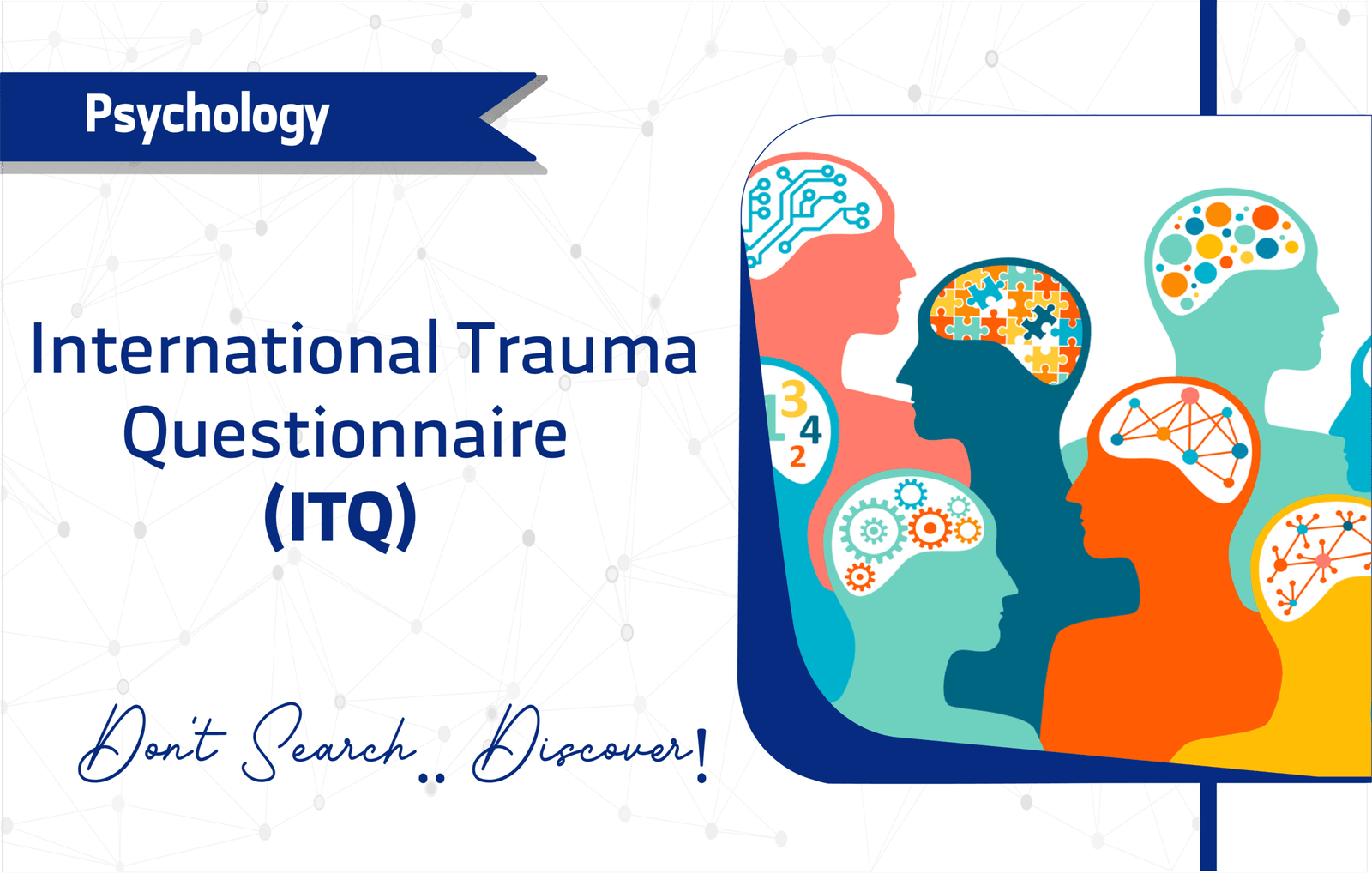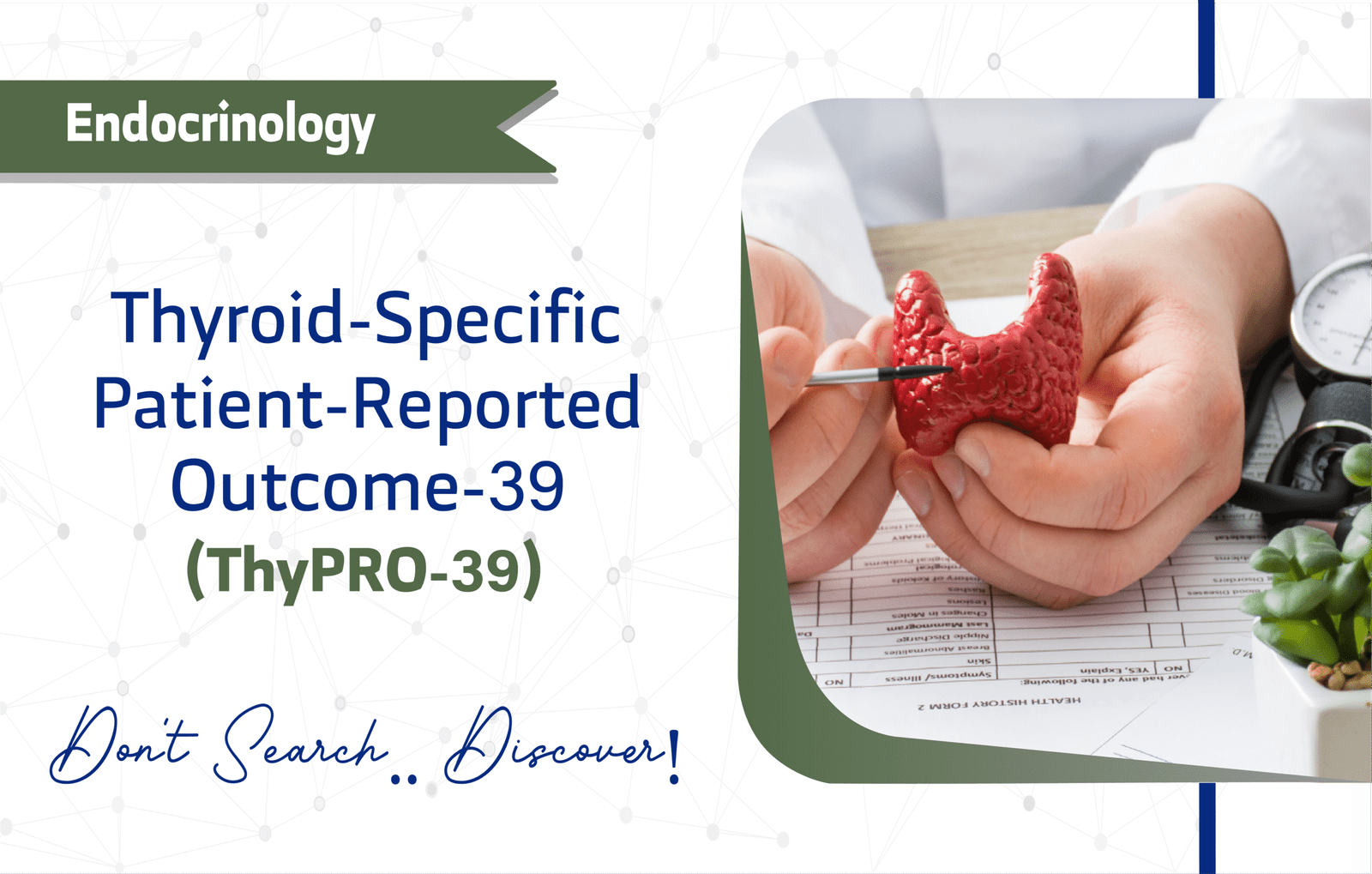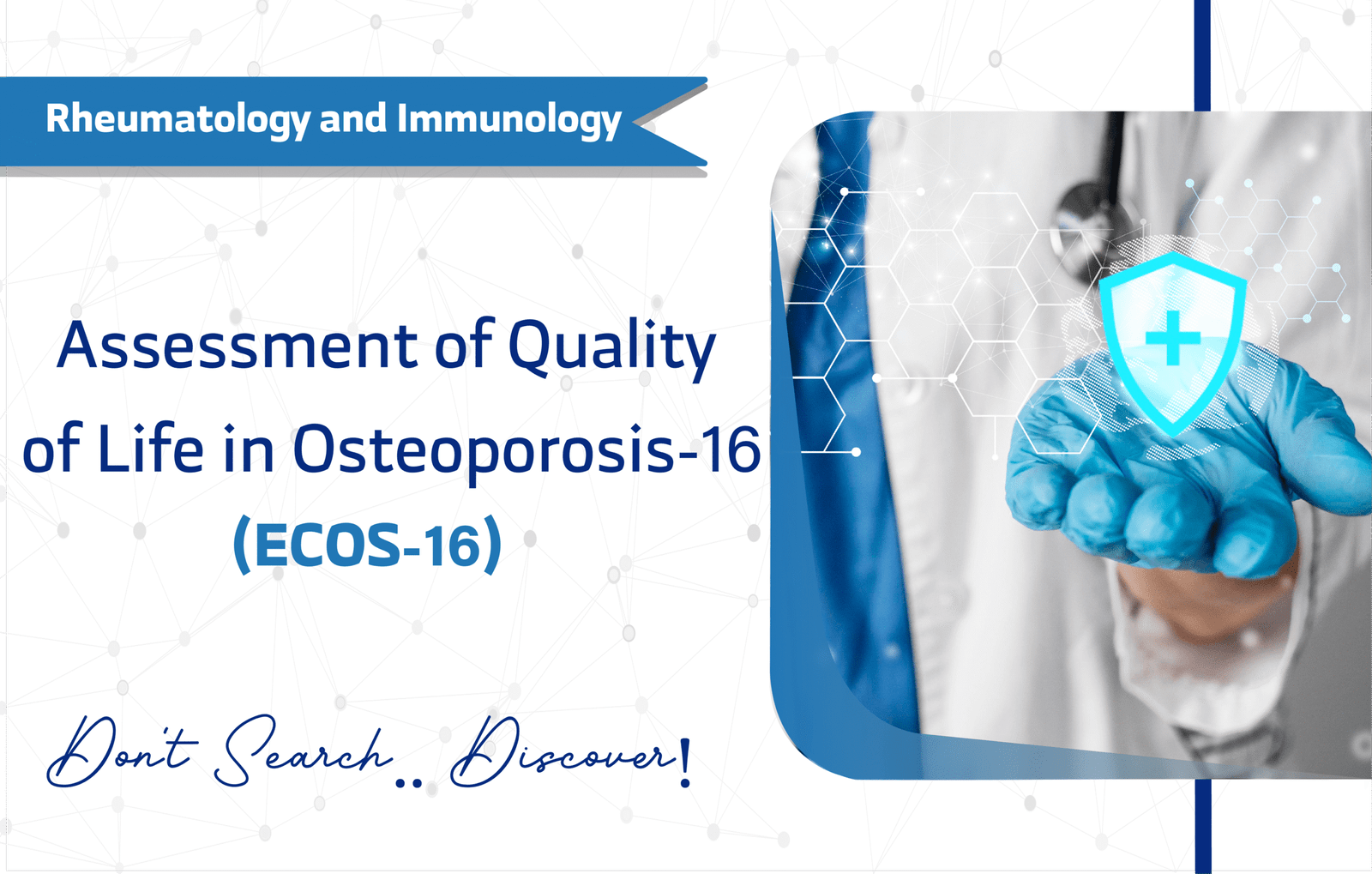Introduction
Vitiligo is more than a cosmetic disorder—it carries significant psychological and social burdens that affect patients’ daily lives. Measuring this impact accurately is crucial for clinicians and researchers aiming to improve care and evaluate interventions. Developed by Gupta et al. (2014), the Vitiligo Impact Scale (VIS)-22 is a vitiligo-specific quality-of-life (QoL) questionnaire that addresses this need. With over 70 citations and proven psychometric properties, the VIS-22 stands as a highly reliable, culturally sensitive tool for assessing the psychosocial consequences of vitiligo.
Validated in large clinical populations and endorsed by the British Journal of Dermatology and the Indian Journal of Dermatology, Venereology and Leprology, the VIS-22 is increasingly utilized for screening, monitoring, and treatment planning in both research and clinical settings (Gupta et al., 2014).
Key Features of the Vitiligo Impact Scale (VIS-22)
Purpose and Use
The VIS-22 is specifically designed to measure the psycho-social burden of vitiligo. It captures the emotional, social, and functional impact of the condition, providing valuable insights into patients’ quality of life. The tool is useful in screening, monitoring, and treatment planning, making it highly applicable in both clinical and research environments.
Target Population
The VIS-22 is suitable for individuals aged 15 years and older, including adolescents, adults, and seniors. It is intended for patients who are currently living with vitiligo, regardless of disease duration, body area affected, or treatment history.
Structure
The instrument contains 22 items that span the following domains:
- Attitude: 4 items
- Anxiety: 2 items
- Social Interactions: 3 items
- Self-Confidence: 2 items
- Depression: 4 items
- Treatment Burden: 3 items
- Family, Marriage, Occupation, and Education: 1 item each
These domains collectively reflect the complex psychosocial landscape that vitiligo patients often navigate.
Scoring Method
The VIS-22 uses a 4-point Likert scale per item (0 = Not at all; 3 = Very much), generating a total score between 0 and 66. Score interpretation is as follows:
- 0–5: No impact
- 6–15: Mild impact
- 16–25: Moderate impact
- 26–40: Large impact
- 41–66: Very large impact
Higher scores indicate greater psychosocial burden, making the VIS-22 an effective tool for evaluating treatment needs and quality of life changes.
Administration Format
The VIS-22 takes 5 – 10 minutes to administer, making it highly efficient. It can be conducted via:
- Paper-based forms
- Digital (Online) platforms
- In-person (Interview)
Its self-administered format, requiring no specialized training, enhances its practicality for busy clinical environments.
Applications of Vitiligo Impact Scale (VIS-22)
Thanks to its clear scoring, broad domain coverage, and vitiligo-specific focus, the VIS-22 supports:
- Screening for high psychosocial distress.
- Monitoring change over time or post-treatment.
- Treatment Planning through tailored psycho-dermatological care.
- Research in quality of life studies and clinical trial.
Languages and Availability
The VIS-22 is available in few languages, including:
- English
- Mandarin Chinese
- Hindi
- Urdu
- Kannada
The VIS-22 is free for academic, non-commercial use. However, permission is required prior to use. Researchers can obtain permission by contacting the authors directly:
- Dr. Vishal Gupta: doctor.vishalgupta@gmail.com
- Dr. M. Ramam: mramam@hotmail.com
No formal license is specified, but users are advised to obtain written approval.
Reliability and Validity
The VIS-22 is recognized as a highly reliable and valid instrument for assessing the burden of vitiligo. Its development followed rigorous psychometric testing, confirming high test-retest reliability and strong construct validity.
These studies confirm that the VIS-22 is responsive to clinical change, with a Minimal Important Change (MIC) of five points.
Limitations and Considerations
However, despite its strengths, the VIS-22 has a few limitations:
- Self-report: Respondents may be influenced by social desirability bias or personal interpretation.
- Cultural Bias: May require adaptation for use in non-Indian populations.
- Language Barriers: Limited availability in non-English/Indian languages.
- Limited Validation Studies: Few cross-cultural validations exist.
- Age Restrictions: Not validated for patients under 15.
- Social Desirability Bias: Respondents may answer in ways they believe are more socially acceptable, potentially skewing results.
Other Versions and Related Questionnaires
Alternative Versions of VIS-22
- Original Vitiligo Impact Scale (VIS): A longer, 27-item prototype that laid the groundwork for VIS-22.
Complementary Questionnaires
- Vitiligo Life Quality Index (VLQI)
- Vitiligo Impact Patient Scale (VIPs)
- Dermatology Life Quality Index (DLQI)
- Skindex-16
Additional Resources
For more information on the VIS-22 and to access the full questionnaire, visit the following resources:
- You can access the questionnaire as a PDF through this link
- For inquiries, contact Dr. Vishal Gupta at doctor.vishalgupta@gmail.com
- For inquiries, contact Dr. M. Ramam at mramam@hotmail.com
Frequently Asked Questions (FAQ)
- Who can use the VIS-22?
Clinicians, researchers, and healthcare providers assessing psychosocial burden in vitiligo patients aged 15 and above. - How long does it take to complete the VIS-22?
It typically takes 5–10 minutes, depending on the patient’s reading level and setting. - How is the VIS-22 administered?
The questionnaire can be delivered via paper-based, digital (online), or in-person interviews. - Is there any cost to using the VIS-22?
It is free for non-commercial use, but requires prior permission from the original authors.
A word from ResRef about Vitiligo Impact Scale (VIS-22)
The Vitiligo Impact Scale (VIS-22) offers significant advantages as a valid, reliable, and responsive vitiligo-specific quality-of-life tool, effectively capturing the psycho-social burden of the condition with clear scoring interpretations and ease of administration for patients. It has demonstrated strong psychometric properties, including good validity and high test-retest reliability making it a valuable instrument for monitoring and research. However, its limited translations to other languages may limit patients or researchers from using it.
References
- Gupta, V., Sreenivas, V., Mehta, M., Khaitan, B.K., Ramam, M. (2014). Measurement properties of the Vitiligo Impact Scale-22 (VIS-22), a vitiligo-specific quality-of-life instrument. British Journal of Dermatology, 171(5), 1084–1090. (link)
- Gupta, V., Ramam, M. (2022). Vitiligo Impact Scale (VIS)-22: A measure of the psycho-social burden of vitiligo. Indian J Dermatol Venereol Leprol, 88(5), 691–695. (link)
- Gupta, V., Sreenivas, V., Mehta, M., Ramam, M. (2019). What do Vitiligo Impact Scale-22 scores mean? Studying the clinical interpretation of scores using an anchor-based approach. British Journal of Dermatology, 180(3), 580–585. (link)
- Gupta, V., Taneja, N., Sati, H.C., Sreenivas, V., Ramam, M. (2020). Determining the minimal important change scores of the VIS-22 and DLQI in Indian patients. British Journal of Dermatology, 183(2), 393–394. (link)


